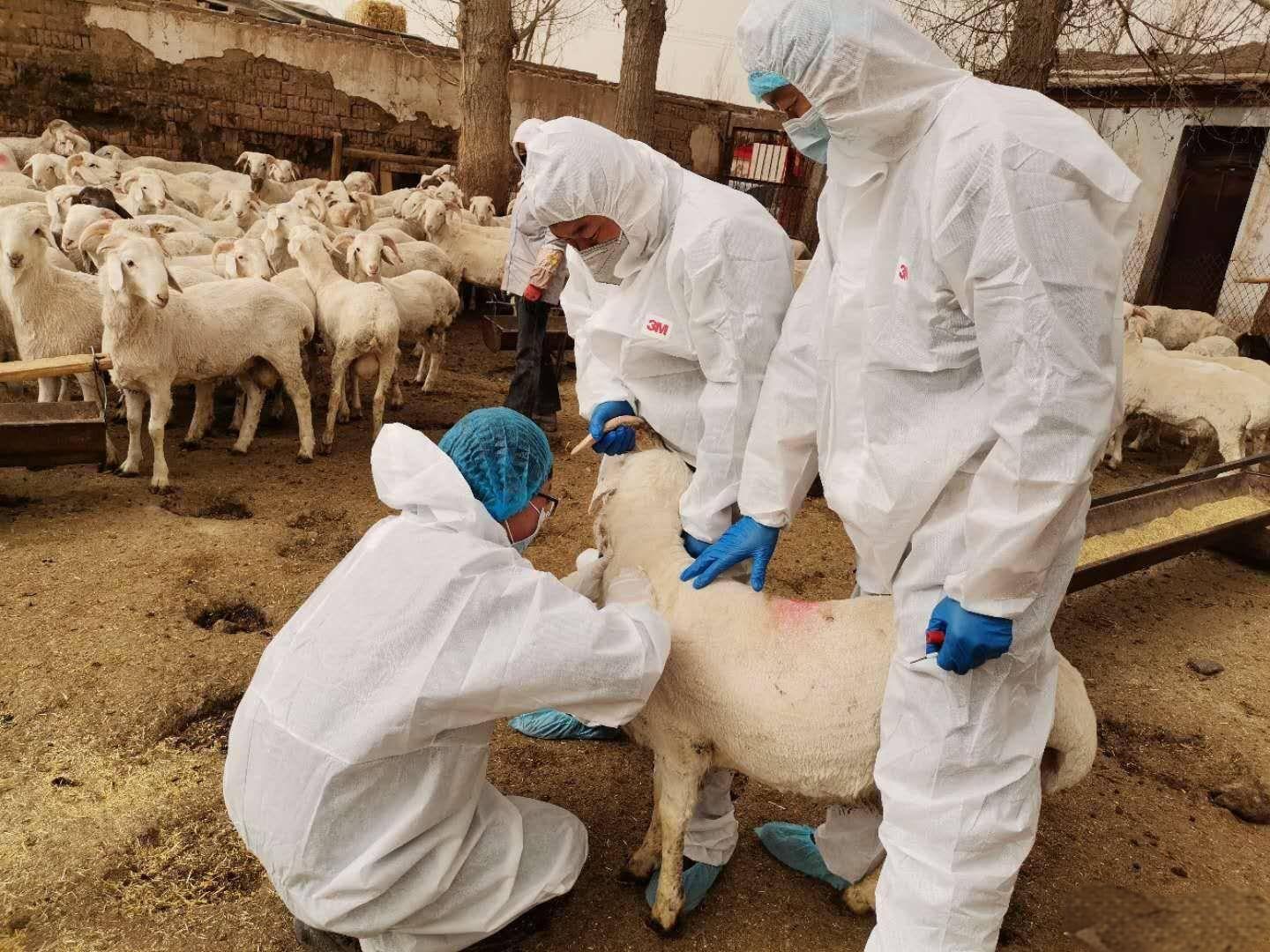The gray areas on the screen of a pig ultrasound machine represent tissues such as bones and muscles, while the black structures correspond to structures filled with fluid, such as a pregnant uterus or bladder. In the early stages of pregnancy, the uterus begins to accumulate fluid. This accumulation is represented by a series of small black circles on the ultrasound screen. In the non pregnant animals, there was no fluid retention in the uterus, and the image was composed of solid gray masses without small black circles. As pregnancy progresses, the activity of the fetal heart and the developing fetal bones can be visualized through real-time ultrasound.
Pig B-ultrasound images
The use of real-time pig ultrasound machine for examination is a highly accurate method for detecting pig pregnancy. On the 21st day of pregnancy, 96% of sows' pregnancy status was correctly diagnosed in the study environment, and the accuracy rate exceeded 93% when scanning sows 21 to 23 days after breeding in commercial pig farms. In contrast, the accuracy of attempting to diagnose pregnancy before the 21st day of pregnancy is less than 70%. Between 17-28 days of pregnancy, the amount of fluid accumulated in the uterus increases by nearly 70 times. Therefore, the low accuracy before day 21 may be due to insufficient fluid in the uterus to consistently visualize the differences between a high percentage of pregnant women and pregnant women.

During the first three weeks after reproduction, false positives and false negatives are most common when scanning females. Compared with A-type and Doppler ultrasound, many situations that lead to misdiagnosis of pregnancy have been eliminated by real-time machines, as they can see various aspects of the developing fetus and provide more detailed images for doctors to interpret.
In this case, the ultrasound images of the mother pig without a fetus are consistent with the presence of uterine fluid, but the scans of the pregnant mother pig show fetal bones and heartbeat. Pigs can easily identify the bladder with a B-ultrasound machine, and the real-time unit will not have false alarms caused by probe misalignment and bladder scanning.
Although real-time ultrasound examination is the most common type of pregnancy testing, it is also the most expensive. However, with the improvement of real-time technology, the cost of these units is expected to decrease. In terms of labor demand, compared to analyzing signals from Type A machines, interpreting images on ultrasound screens requires more time and specialized knowledge, but compared to evaluating sound patterns related to Doppler units, labor and skills are less. Using an A-mode machine, technicians only need to recognize two different signals, which takes less time than evaluating sound patterns or two-dimensional images. The interpretation of real-time images is easier than the evaluation of Doppler sound modes, as the anatomical reference points in the images can be used to guide technicians during the scanning process. For example, the bladder is located behind the uterus and is easily identified as a large black circle on an ultrasound screen. Therefore, once the bladder is found, the probe needs to be tilted slightly forward to scan the uterus. There is basically no equivalent reference point available to guide the probe movement of Doppler machines.
As with other ultrasound technologies, the separate enclosure and Flat noodles that are easily accessible to the hindquarters of sows are the characteristics of breeding and pregnancy buildings, which help to detect pregnancy through real-time ultrasound. Some models of displays (receiving units) are too large for technicians to carry during scanning. Therefore, the practical requirements for using these models include a handcart for placing displays and a small alley that allows the handcart to move. Or, in some operations, during pregnancy testing, the monitor is placed on a rack on the top of the rear of the Flat noodles or Flat noodles. The current trend in real-time technology is to reduce the size of the monitor, thereby increasing the convenience of processing the unit. Some models can be carried by technicians using belt straps, while others display images in a special set of goggles worn by technicians like glasses.
tags: B-ultrasound machinesultrasound machinepig ultrasound machineultrasound


